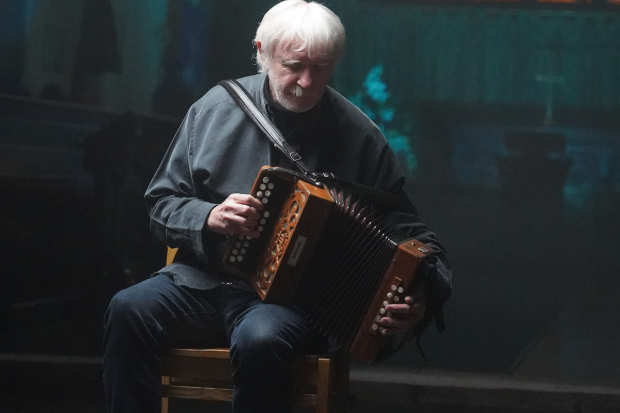
Composer's Style
Siar, the third solo album from button-accordion player Johnny Óg Connolly, is one that foregrounds his skill as a composer as well as a musician. Connolly’s tunes have appeared on his other recordings, including for instance the great reel ‘Homage to Rooney’ on the duet album with Brian McGrath, Dreaming up the Tunes.
For this recording he has followed several other musician-composers in putting together a complete album of his own music (with one exception, a Gigue by the Italian composer Corelli). Siar is something of an artistic statement then, but one which is informed by and expressive of Connolly’s own life, family, and friendships, particularly those with other musicians: on the album there’s music for (among others) Brian Rooney, Joe Neachtain, Dermot Byrne, and Dordán. Connolly’s words of introduction in the sleeve-notes express the emotional and personal nature of this music, and it’s rare to read such an insightful reflection on the music’s meaning.
The tunes themselves are varied in style and type, with several waltzes, airs and marches, and a strathspey and planxty, among the more usual reels and jigs. In some cases the tunes seem to reflect on the music of the dedicatee, as for instance on the ‘Coleman-Kreisler Hop Jig’, which channels the meeting between those two virtuosi, as well as echoing Kreisler’s Praeludium, marking fiddler Liam O’Connor’s interest in both. Without wanting to go too deeply into the invidious question of whether traditional composers have their own styles or not, for me this tune, the Corelli and some of the waltzes fired off connections to some of Máirtín O’Connor’s music, in their drawing from classical and other European musical traditions.
Unusual turns
Perhaps one distinctive quality of the tunes on Siar – particularly the reels and jigs – is the sweep and unusual turns in many of the phrases, often spanning wide ranges across the keyboard. Highlights for me were ‘The Blakes of Mayo’, where Connolly is joined by the almost ubiquitous John Blake (for his ‘own’ tune, so to speak), ‘Ríl Sheosaimh’, and the final live set of waltzes, tunes named for Inis Bearacháin, the Conamara island where his father was from, and which remains central to his music.
The island’s importance is further evoked in the album’s design and photography. The cover photograph presents an image a schoolhouse on the island itself, Inis Bearacháin. Connolly is perched on top of a table playing one of the most recent brands of accordion, the Manfrini. Inside the CD cover, he’s joined in the picture by his father, Johnny. They’re an arresting pair of images, yet again underlining the continuing importance of place, family, and the past to traditional music, even in a collection like this of new material.
For more, visit www.johnnyogconnollysite.wordpress.com/
Published on 26 July 2017
Adrian Scahill is a lecturer in traditional music at Maynooth University.

















